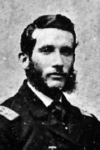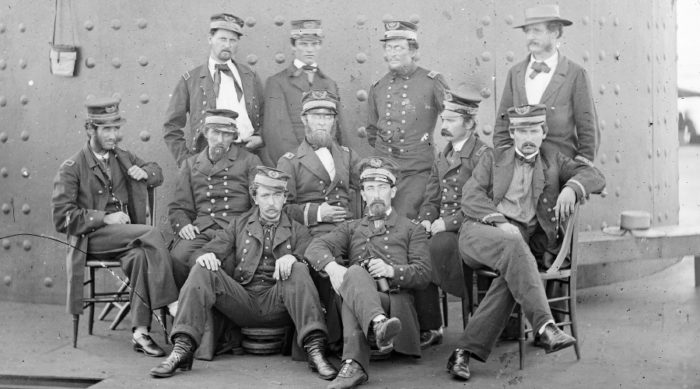
Last week, I wrote about the USS Monitor’s visit to Washington Navy Yard and the furor it created when it arrived. Today, we will look at the complete chaos that ensued once it was open to the public.
While some people had been able to visit the Monitor immediately after its arrival at the Washington Navy Yard, it was soon closed to visitors and to allow the repairs to go on. However, on November 6, 1862, there was an ad in the Daily Intelligencer announcing that the ship would be open to the public that afternoon until sunset. There was an immediate rush to the gates and the following day the Daily National Republican reported
Of course, the greatest attention was paid to the round tower, which gave her the [name “Cheese Box”] and where the two black “dogs of war” are ready not only to “cry havoc,” but when allowed to speak, “make havoc” with the objects of their wrath. We will not attempt a full description of an object which has so often been described by the press. The indentations made by the balls of the Merrimac, Minnesota and Fort Darling battery, are still visible on the plated iron turret, though it is covered to a thickness of 7-1/2 inches by eight thickness of wrought iron plating.
The places are marked by an engraving cut into the iron, designating the name of the vessel from which the shot came. On the turret were six impressions made by the Merrimac, two by the Minnesota, and one by the Fort Darling battery. On the larboard side of the vessel, just abaft the turret, was an indentation made by the prow of the Merrimac. This apparently did not effect as much as the shot, as the impression was only about an inch deep, while on the bow, near the wheel house, the iron plating of the deck appears to have been penetrated by one of the Merrimac’s shots.
The Washington Evening Star concentrated more on the visitors:
Folks peeping up stairs and down stairs, into cannon muzzles, engine pits, pilot houses, shot holes, cracks and crevices; and there were “Peeping Toms” quite mean enough to take advantage of the embarrassments of the ladies in crossing the sieve-like deck and in ascending and descending the perpendicular ladders and gangways. But the ladies of Washington are rather famous for pretty ankles, and perhaps they didn’t mind it.
There were more serious occurrences, as well. The Star reported that one R. P. Compton was arrested for stating that “the South would be successful; and as for the Monitor she was d—d humbug, with other talk of this sort.” Compton was arrested with the aim of delivering him to the Old Capitol prison.

More direct damage to the ship was reported by Louis N. Stodder [pictured] in a letter to his wife a few days later:
When we came up to clean that night, there was not a key, doorknob, escutcheon – there wasn’t a thing that hadn’t been carried away.
Replacing these items, as well as finishing up painting and installing the last wood and ironwork proceeded even as the ship was taken over again by the crew, and three days after the great onslaught of visitors, the Monitor left the Navy Yard and returned to its usual post off Newport News.
Less than two months later, she would founder and sink off Cape Hatteras.
